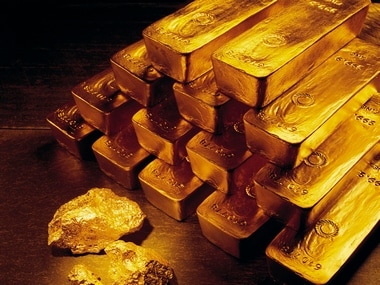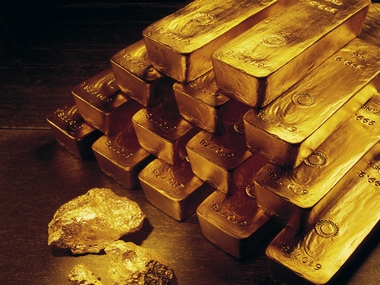The next nine months will be a period of great uncertainty for investors as the country grapples with serious political, economic and geopolitical turbulence simultaneously.
So where should one put one’s money? I would say bonds, gold, and equities, roughly in that order, but certainly not in real estate (unless you are a pro on property yourself). Of course, how much one should put in which asset class would depend on one’s risk appetite and asset allocation strategy. If you cannot afford to take any risk, try bonds and fixed deposits; if you can, try bonds and gold and some equity; if you can afford to take significant risk and your payback horizon is at least five years, try all three, with a higher allocation for equity.
But before we get to answering where to invest, let’s understand the why.
A few things are now a certainty, in terms of trends in the economy. And that’s the place to begin.
[caption id=“attachment_1080983” align=“alignleft” width=“380”]
 India is the only country in the world where returns on gold this year have been positive. AP[/caption]
India is the only country in the world where returns on gold this year have been positive. AP[/caption]
First, GDP growth is likely to be lower than last year despite the expected agricultural bounty from a good monsoon. Consensus growth estimates are now in the range of 4.5 percent or even lower, and anyone predicting 5 percent and above is an outlier. When growth is down, corporate profits are unlikely to be great; this means profits will be under pressure, if not down. The other side of the coin is that this may be the best time to pick up good shares.
Second, inflation may remain elevated. While core inflation (non-food, non-fuel) is coming down due to the slowdown in consumer demand, non-core inflation may actually rise due to the need to cut diesel subsidies drastically, the likely increases in minimum support prices (MSPs) for food and higher demand for protein-based items such as milk, eggs, fruits and vegetables and pulses. Cost-push will keep food inflation higher and this could overwhelm the dent in manufacturing inflation.
Three, the above two factors lead me to suggest that short-term interest rates will stay high even if the longer-term trajectory should be down due to slowing growth. This means there is no interest rate nirvana in sight for the corporate sector over the next two years. But for investors, bonds and fixed deposits will yield more in the short-term.
Four, the rupee will remain undervalued - which means in the range of 60-65 to the dollar - till the elections are over and we know what happens to capital inflows after the US Fed begins tapering off its bond purchases. This is both good news and bad news. It means exports will rise, and companies which face import competition will be protected. Their profits will rise. But companies with high import exposures will see profits being dented.
Five, thanks to geopolitical tensions over Syria and Iran, one cannot rule out elevated oil and gold prices. Domestically gold is having a decent run, thanks to import curbs. India is the only country in the world where returns on gold this year have been positive.
If we accept these realities, it becomes clearer where we must invest, but based on our personal levels of risk tolerance.
My personal preference is for about 5-10 percent in gold, 50-80 percent in fixed income and bonds, and the balance in equity. For those who are at the start of their careers, a much higher weightage for equity should work.
Here’s the logic, based on the above macroeconomic assumptions.
Gold appears to have bottomed out in the international markets because at prices below $1,200 an ounce, there will be production cuts and a tightening of supplies. The price is now around $1,390-1,400. In India, thanks to our current account deficit, the government is curbing imports. Sebi has even refused to sanction gold exchange traded funds . With artificial curbs on gold, supply of the metal will be constrained. With the festival season ahead, one expects gold to remain strong domestically - at least for the next few months. I expect gold to weaken after the elections, assuming we have a government that looks stable and pro-growth.
Bonds and fixed deposits are for safety and reasonable returns. Many bank fixed deposits offer 8.5-9 percent - at least in the short term. Bonds are even better. For example, NHAI tax-free bonds can be bought from the market for around Rs 1,084 (10-year bonds, maturing in 2022), giving a yield to maturity of 8.1-8.2 percent. Adjusted for the top tax bracket, this gives nearly 12 percent annual yield, well above inflation. Remember, tax-free bonds are issued only by government-owned companies, and to that extent they are also safe from defaults.
If one expects interest rates to stay high for a year, and then fall, then these same bonds will appreciate in value - yielding even higher returns. Fixed deposits are less tax-efficient, but if one if going in for longer tenures, one should benefit when interest rates start falling from next year. Their main advantage is simplicity - no need for demat accounts and fear of capital losses.
Equities will start doing better from next year, once the election-eve jitters of the markets end. Also, the next government will have to move fast to revive the economy. The reforms announced by the UPA over the last 12 months will start delivering when the next government is sworn in, which, together with falling interest rates, will give corporate profits and investments a fillip.
Real estate is a real no-no for one simple reason: property is simply overpriced, and the market is rigged against the buyer. It may be preferable to stay in rented houses and avoid purchases right now till the realty market is reformed. I would buy a house only to stay in it, and only if I can comfortably pay the EMIs and still have something left for investment in other avenues. Since very few people have that kind of leeway, real estate makes no sense as an investment. Don’t be fooled by builder prices, since these are arbitrary and not supported by genuine consumer demand, especially in places like Mumbai and Delhi.
)